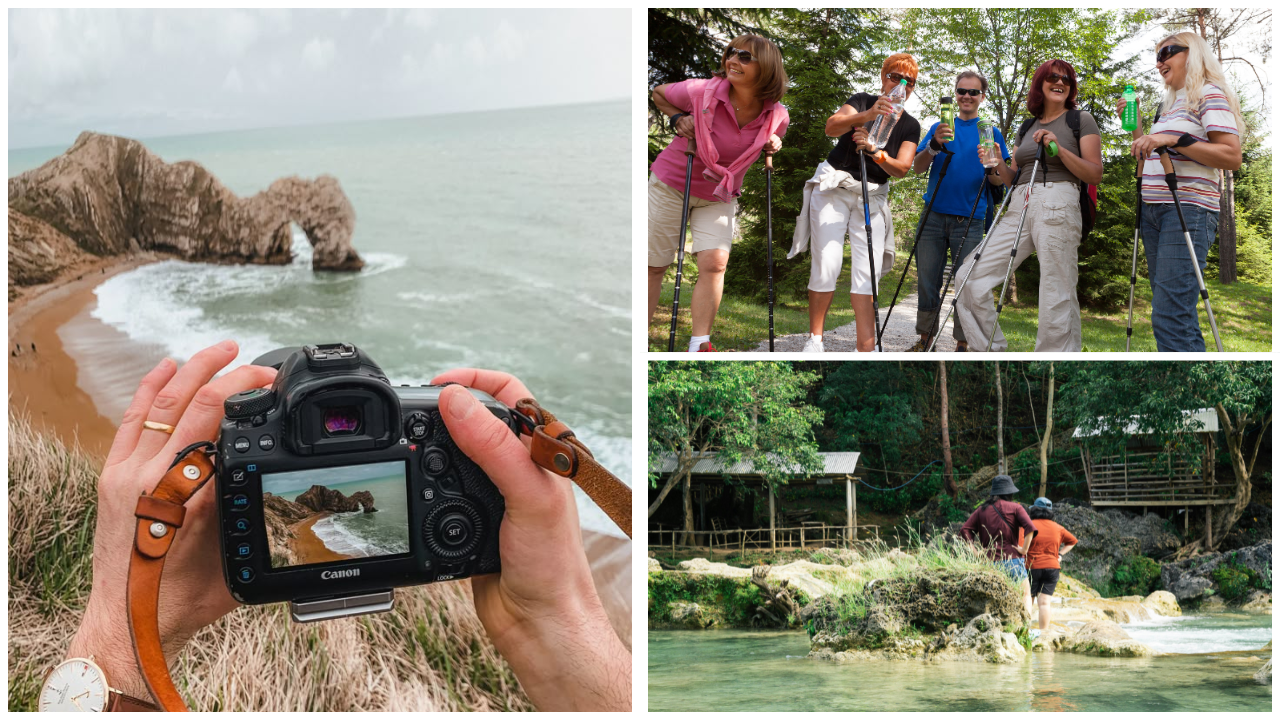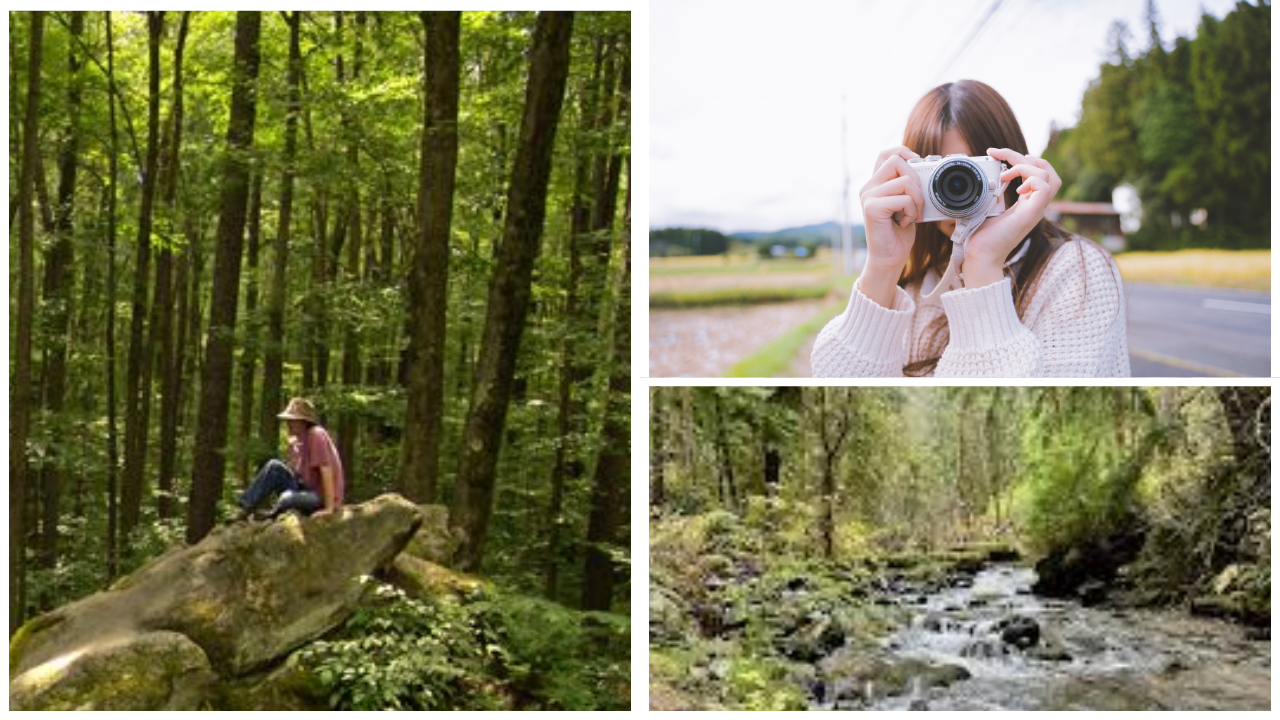In 2025, Sustainable Travel Photography , capturing the world through your lens as a traveler is more than just about beautiful photos—it’s about being mindful of how your photography practice impacts the planet.
Travel photography has long been a passion for many adventurers, but as we move toward a more eco-conscious world, it’s important to consider how we can minimize our environmental footprint while still capturing the awe-inspiring beauty around us.
From shooting on eco-friendly travel to using sustainable gear, every step you take in your photography journey can reflect your commitment to ethical travel. In this article, we’ll share top travel photography tips for 2025 that help you take stunning images while being mindful of the planet.

📸 1. Choose Sustainable Travel Destinations for Your Photography Projects
Why It’s Important:
The best photos often come from the most untouched and breathtaking locations. As travelers, it’s important to choose sustainable destinations that prioritize eco-tourism and environmental conservation. Before you pack your camera, research the destination to ensure that tourism there supports local communities and preserves the environment.
Top Tips:
Eco-friendly destinations often have restrictions on visitor numbers or set guidelines to reduce tourism’s environmental impact.
- Choose locations that focus on conservation or regeneration, such as national parks, marine reserves, and protected areas.
- Engage in low-impact activities such as walking or biking tours for a more immersive and sustainable experience.
- Explore top eco-friendly travel destinations.

🌱 2. Use Sustainable Gear: Choose Eco-Conscious Travel Photography Equipment
Why It’s Important:
The gear you use matters—not only for the quality of your images but also for reducing your carbon footprint. As technology advances, more sustainable options are becoming available for photographers who are passionate about minimizing their environmental impact.
Top Tips:
Invest in durable, high-quality equipment that will last for years, reducing the need for replacements.
- Choose solar-powered chargers for your gear to avoid relying on electricity.
- Opt for eco-friendly camera bags, lens cloths, and accessories made from recycled or sustainable materials.
- Whenever possible, use rechargeable batteries and avoid disposable options.
- Shop sustainable photography gear here.
🌿 3. Capture Nature Without Disrupting It
Why It’s Important:
Nature offers some of the most inspiring subjects for travel photographers, but it’s important to photograph with respect for the environment. You don’t want to disturb wildlife, damage fragile ecosystems, or leave behind waste that could harm the land you’re photographing.
Top Tips:
Always maintain a safe distance from wildlife, and use long lenses to capture animals without disturbing them.
- Stick to designated paths when exploring natural environments to minimize your impact.
- Be mindful of wildlife conservation efforts, and don’t support unethical practices like feeding animals for the sake of a photo.
- Carry your own waste—don’t leave behind litter or waste that could affect the environment you’re capturing.

🌞 4. Optimize Lighting to Avoid Overuse of Resources
Why It’s Important:
Lighting is key to great photos, but overusing artificial lighting can increase your energy consumption. By using natural light and avoiding excessive artificial lighting, you can reduce your environmental impact.
Top Tips:
Opt for natural light whenever possible, and time your shoots for golden hour (the hour after sunrise or before sunset) to get soft, flattering light.
- Use reflectors to bounce light instead of using energy-draining artificial lights.
- If you must use a flash, ensure it’s battery-operated and use energy-efficient lighting solutions.

🌍 5. Embrace Minimalism and Pack Light for Sustainable Travel Photography
Why It’s Important:
Packing light is a great way to reduce your carbon footprint. The more luggage you bring, the more fuel is used to transport it. For photographers, this also means carrying only the essential gear, which can help streamline your shooting process and reduce environmental impact.
Top Tips:
- Pack only necessary photography equipment—focus on quality over quantity.
- Limit your camera gear to what you will actually use. Don’t carry extra lenses or equipment you won’t need.
- Consider lightweight backpacks or camera bags made from sustainable materials that reduce weight and increase comfort.
🧳 6. Digital Editing vs. Physical Printing: Sustainable Travel Photography Choices
Why It’s Important:
In 2025, digital photography dominates, but many photographers still love to print their images. While printed photos are special, they also consume resources like paper and ink. By choosing sustainable printing practices, you can minimize your environmental impact.
Top Tips:
- Opt for digital albums and online galleries instead of physical prints, or consider print-on-demand services that use eco-friendly materials.
- Use sustainable inks and recycled paper if you do print your photos.
- Encourage your clients or followers to buy digital art instead of physical prints to reduce waste.

🌿 7. Choose Eco-Friendly Destinations for Print and Media Work
Why It’s Important:
If you’re using your photographs for commercial purposes, you can further contribute to sustainable practices by choosing to work with eco-friendly destinations or organizations that support conservation and sustainability.
Top Tips:
- Collaborate with eco-conscious brands that prioritize sustainable practices in their campaigns.
- Choose eco-conscious media outlets that use sustainable printing methods and support green causes.
- Opt for nature reserves and conservation projects for your photography work.

🌿 8. Make Use of Travel Apps for Sustainable Travel Photography
Why It’s Important:
Several travel apps now exist to make eco-conscious travel easier, from finding green accommodations to helping you offset your carbon footprint.
Top Tips:
Use apps like IMPT.io to track and offset your carbon emissions from flights and stays.
Green Travel apps help you find sustainable activities, eco-friendly hotels, and responsible travel guides for your next photo shoot location.

🌱 9. Support Local Communities with Ethical Photography Practices
Why It’s Important:
As a travel photographer, you have the opportunity to showcase and support local communities. Ensure that your work benefits the places and people you photograph, helping raise awareness for sustainability and conservation.
Top Tips:
Collaborate with local artisans and photographers to promote their work.
Document cultural stories and sustainable tourism efforts to inspire others to travel responsibly.

🌍 10. Share Your Work to Inspire Change
Why It’s Important:
Your travel photography can be a powerful tool for environmental advocacy. Share your photos on social media or in exhibitions to raise awareness of sustainability, conservation, and climate change.
Top Tips:
Use your platform to promote eco-friendly tourism and green destinations.
Include educational captions that encourage followers to adopt eco-conscious habits.
🌿 Final Thoughts: Eco-Conscious Travel Photography in 2025
In 2025, travel photography is about more than capturing beautiful moments—it’s about doing so in a way that respects both the environment and the people we encounter. By embracing these sustainable travel photography tips, you can reduce your carbon footprint, support local communities, and help spread the message of eco-conscious travel.
Whether you’re shooting a majestic sunset in Iceland, documenting wildlife in Costa Rica, or capturing vibrant street scenes in Asia, remember that every photo can be a tool for positive change.
Read this also : Eco-Friendly Travel in 2025: How to Explore the World Without Leaving a Trace












